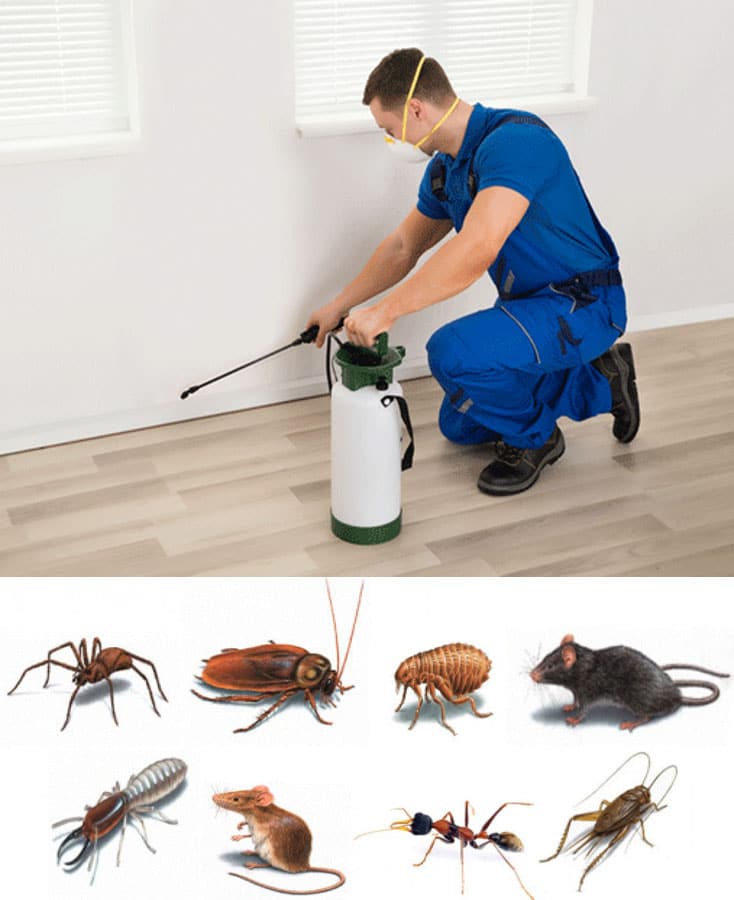Quality A1 Pest Control Services Charlotte - Shield Your Home
Quality A1 Pest Control Services Charlotte - Shield Your Home
Blog Article
Bed Bug Treatment Failure: Contrasting Chemical Vs. Non-Chemical Solutions
In the world of bug control, particularly when dealing with the consistent concern of bed pests, the selection between chemical and non-chemical therapy options can be an essential one. Both techniques provide distinctive advantages and downsides, influencing variables such as effectiveness, security factors to consider, and general cost. By taking a look at the nuanced details of each technique, a more clear understanding of which path to seek in resolving a bed bug invasion can be attained.
Efficiency of Chemical Treatments
Chemical treatments for bed insect problems have been commonly recognized for their quick and potent efficacy in getting rid of these bugs. When thinking about the performance of chemical treatments, it is vital to recognize that they can supply a fast and extensive remedy to a bed pest issue. Specialist pest control specialists commonly rely on pesticides to target bed pests at various stages of their life process, including fairies, eggs, and adults. These chemicals normally work by interrupting the bed insects' nerves, resulting in paralysis and ultimate death.
Additionally, chemical treatments have the benefit of offering residual impacts, suggesting that they can proceed to get rid of bed pests even after the first application. This recurring activity is particularly useful in combating any type of possible re-infestations. Additionally, the rapid activity of chemical treatments can bring alleviation to people facing extreme bed pest problems, permitting them to regain control of their living rooms promptly.
Security Worry About Chemical Solutions
One important element that requires cautious consideration when utilizing chemical services for bed bug treatment is ensuring the safety of owners and the setting. Direct exposure to specific chemicals made use of in bed pest therapies can lead to respiratory system problems, skin irritation, or other adverse responses, specifically in people with pre-existing conditions or sensitivities.
Furthermore, the ecological effect of chemical services is an additional considerable factor to consider. Some chemicals utilized in bed bug therapies might be damaging to valuable bugs, wildlife, and communities if they seep into the soil or water systems. It is important to make use of chemical treatments deliberately, complying with safety and security standards, and thinking about less hazardous alternatives to minimize these risks and guarantee the effective and secure administration of bed pest invasions.
Advantages of Non-Chemical Approaches
Considering the possible safety worries and environmental effect related to chemical services for bed pest treatment, checking out non-chemical approaches presents an encouraging alternative with a number of distinctive benefits. Non-chemical techniques use a much safer alternative for households, particularly those with people, children, or animals sensitive to severe chemicals. These techniques get rid of the risks of direct exposure to toxic compounds, minimizing the possibility for unfavorable wellness results. Furthermore, non-chemical treatments are eco-friendly, as they do not contribute to air or water contamination, making them a lasting option for bug control.
Additionally, non-chemical options can be efficient in targeting bed pests, consisting of hard-to-reach areas where chemical therapies might not permeate. Techniques such as warmth therapy, vacuuming, heavy steam cleaning, and mattress coverings supply extensive obliteration without the usage of dangerous chemicals. In addition, non-chemical methods can be less turbulent, needing marginal prep work and permitting quicker reentry into dealt with areas. Overall, selecting non-chemical bed bug therapy techniques not only focuses on security and environmental management yet also ensures thorough and reliable insect control.
Limitations of Non-Chemical Treatments

Furthermore, non-chemical treatments often call for numerous applications to attain successful eradication. This can be taxing and may not constantly assure complete removal of all bed bugs and their eggs, specifically in hard-to-reach or concealed areas.
Moreover, the success of non-chemical treatments greatly relies upon correct implementation and thoroughness, which can be testing for individuals without professional expertise. Insufficient application of non-chemical methods might cause insufficient eradication, causing persistent invasions and the demand for extra treatments.
Therefore, while non-chemical therapies have their benefits, it is vital to recognize these limitations and consider them when identifying one of the most effective technique for managing bed bug invasions.
Cost Contrast: Chemical Vs. Non-Chemical Options
Provided the limitations associated with non-chemical therapies, an essential facet to examine in the context of bed insect management is the price contrast in between chemical and non-chemical alternatives. In contrast, non-chemical treatments like warmth treatment or steam can be extra pricey, with prices varying from $1,000 to $6,000 for an entire home. While the preliminary expense of chemical treatments might seem lower, numerous treatments may be required to fully remove the invasion, potentially enhancing the total cost.
Verdict

Considering the prospective security issues and environmental effect linked with chemical services for bed bug therapy, discovering non-chemical strategies provides a promising alternative with several distinct advantages.Offered the limitations linked with non-chemical therapies, a necessary facet to evaluate in the context of bed bug management is the price contrast between chemical and non-chemical choices. In contrast, non-chemical therapies like warmth therapy or steam can be extra costly, with expenses varying from $1,000 to $6,000 for an entire home. While the preliminary cost of chemical therapies may appear lower, multiple therapies may be required to completely eliminate the infestation, possibly boosting the general price.In verdict, when contrasting chemical and non-chemical bed pest therapy alternatives, it is essential to take into consideration performance, safety and security, benefits, restrictions, and cost.
Report this page